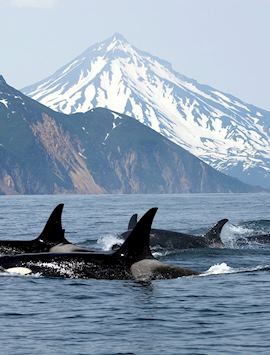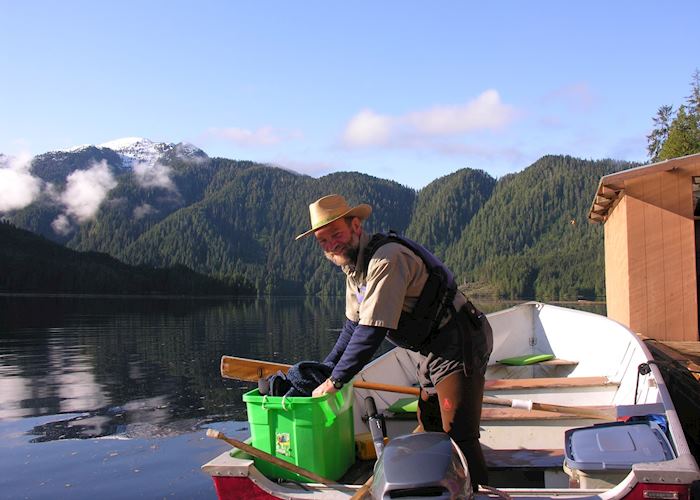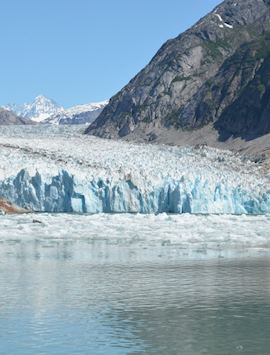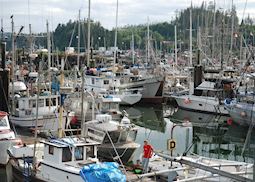
This secluded floating lodge is a place for getting back to nature and observing some of Canada’s wildlife, whichever season you decide to visit.
Your lodge stay technically begins in Port Hardy, with a seaplane transfer taking you over Queen Charlotte Strait to the lodge itself. Great Bear Lodge has warm and welcoming owners, and plenty of experienced and knowledgeable guides who all hold degrees in ecology or biology: you can ask them about everything from grizzly bear habits to the temperate rainforest’s ecosystem.
The lodge itself has eight simple yet snug, comfortably furnished rooms, some with views overlooking the water.
We were really impressed with the family-like feel of this truly remote wilderness lodge and its activities. There’s a real emphasis on the area’s educational and environmental aspects, as well as the bear viewing itself.
who's been there
-
01993 838 92501993 838 700
- Make an enquiry
Photos of Great Bear Lodge
Rooms
The lodge has eight identical rooms with either one king bed or two twin beds. Each room has an en suite bathroom, with a toilet and a shower. The rooms are rustically furnished with wooden boarded walls and simple furniture. There are complimentary bathrobes, and although hair dryers aren’t permitted for energy-saving reasons, rooms do have sockets for charging cameras. All of the rooms look out either toward the rainforest at the back of the lodge, or across the water directly in front of the property.
Location
The lodge can only be reached by a seaplane that leaves from Port Hardy. Although there’s a road leading away from the lodge, it’s a dead end, only used for logging. Due to the possible presence of grizzly bears and other wildlife, you’re encouraged not to leave the floating lodge or its decking without being accompanied by a guide.
Food and drink
The lodge’s chefs prepare hearty meals for breakfast, lunch and dinner using local ingredients such as salmon, maple syrup, and local herbs. Organic food is served where possible. You’ll dine with Tom, the owner of the lodge. Throughout the day, you can also help yourself to a selection of complimentary homemade cookies and drinks. Dietary needs are catered for, where possible.
Facilities and activities
As part of your stay at this lodge you can take part in many guided experiences, including interpretive wilderness and nature walks as well as bear-viewing trips. The lodge has a library that’s well-stocked with natural history books, and your stay includes the chance to listen to talks by the lodge’s guides. There’s also the opportunity to tour the surrounding inlets by boat.
Accessibility
Accessibility is, unfortunately, limited for this property: it isn’t suitable for wheelchair users due to the seaplane flight and the need to move in and out of small motor-driven dinghies.
Environmental and social responsibility
The lodge is run almost entirely on renewable energy: wind and solar power. It uses natural water sources and has features such as timed lights to help reduce its carbon footprint.
Tour ideas in Port Hardy
Our itineraries are there to spark ideas for how you could include a stay at Great Bear Lodge as part of your trip. Treat them simply as suggestions, because every aspect of the trip we create for you will be yours to define.
Alternative places to stay nearby
Where possible, we like to offer a range of accommodation for each stop of your trip, chosen by our specialists as some of their favourite places to stay. To help you make the right choice, we give each property a rating based on its facilities and service, but we also look for hotels with distinct character or a location that can't be bettered.
-
![Exterior, Kwa'lilas Hotel, Port Hardy]()
Kwa'lilas Hotel
Port Hardy
Port Hardy and nearby places
- Northern Vancouver Island 82 miles away
- Campbell River 110 miles away
- Vancouver Island 117 miles away
- Bella Coola 120 miles away
- Tofino 129 miles away
- The Sunshine Coast & Desolation Sound 131 miles away
- Princess Royal Island 166 miles away
- Whistler 204 miles away
- Vancouver 218 miles away
- Salt Spring Island 223 miles away












